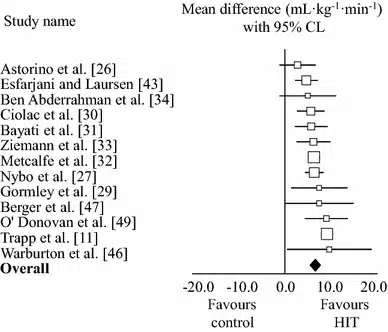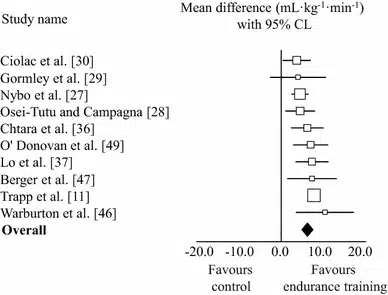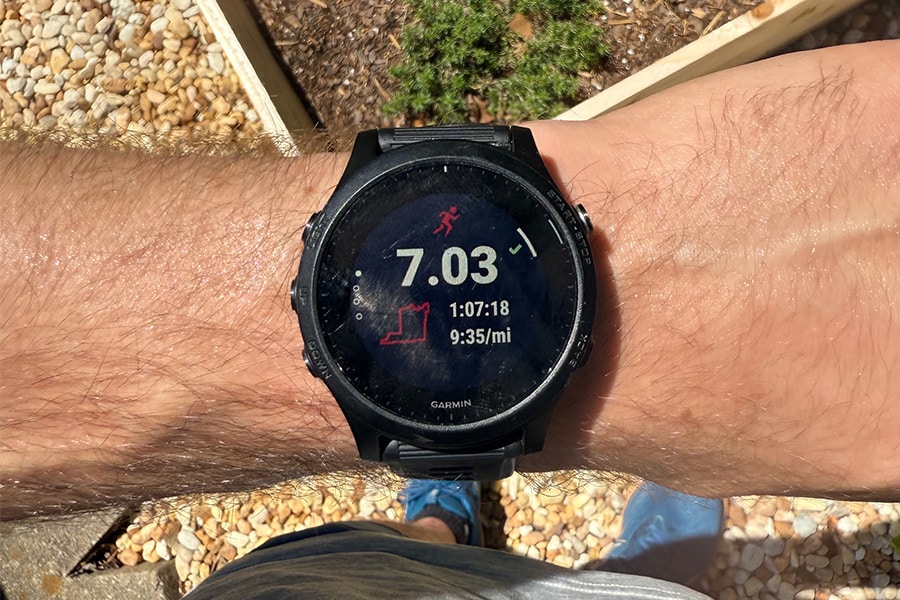What is Variety in Training?
Adding in Endurance Training
The first thing that comes to mind when many people think of endurance training is running. While this is one form of endurance training, it is far from your only option. Endurance training is any physical activity performed with the goal of improving cardiovascular health, muscular endurance, or the ability to perform sustained activities for a longer period of time. Some examples of endurance training are running, cycling, and swimming for the endurance athlete, supersets, High-Intensity Interval Training (HIIT), and higher rep ranges for the strength athlete, or walking, core exercises, and taking the stairs for an untrained person. In essence, there is a different method of endurance training for everyone, and hopefully we can convince you to incorporate it into your workout routine.
In my last article, I went into a bit of detail about what we mean when we say that there are benefits to adding variety to your training. In a nutshell, training can be broken down into three tenets: strength, endurance, and mobility. Most people ignore one or more of these tenets, instead opting to focus narrowly on a single aspect of fitness. By substituting out some of your training volume in your preferred tenet for some volume in one of the other tenets, you can see some tremendous performance and health benefits. Read more about strength training here…
Benefits of Endurance Training
Whether you’re looking to improve your overall health, train for an endurance event, or even make gains in the gym, there is likely some benefit to be had from endurance training. Ultimately, endurance training will help you perform physical activity for a longer amount of time. This could be as simple as walking for longer each day to reach a certain daily step goal, or as difficult as running your first marathon (I did mine last year). The side effects of this improvement are what we’re really getting at here though.
First, I think it’s necessary that we address the elephant in the room: weight loss. In my own personal experience, I’ve noticed that most people that do cardio are doing it to lose weight and keep it off. While it is true that burning calories can help you lose weight, active calories burned typically accounts for a very small portion of the overall calories burned in a day. Instead, most of the calories you burn in a day are from your Base Metabolic Rate (BMR), Non-Exercise Activity Thermogenesis (NEAT), and to a lesser degree, the Thermic Effect of Food (TEF). We’ll dive into these concepts more in a later article, but what you should take away is that you would have to exercise well more than the recommended amount to have a real effect on weight loss. Instead, I prefer to focus on the perspective of what we gain, instead of what we lose.
Speaking of what we have to gain from endurance training, perhaps my favorite part of endurance training is how it affects our ability to do other things. The performance benefits of endurance training for athletes is obvious: you will be able to perform at a higher level for a longer duration. Less obvious though, are the performance improvements that the everyday person can realize. It may be tempting to think that we don’t need endurance in our daily lives, but as a family man, I’d beg to differ. My daughter is barely 1 year old, and already I’m spending 90% of my free time chasing her around and laughing with her. I can easily imagine a world where I wasn’t fit enough to keep up with her, and I don’t want to find myself in that situation. If keeping up with your kids and grandchildren isn’t a good enough motivator to do some cardio though, then maybe your health will be.
Consistent research over the years has shown that increasing the amount of physical activity you perform has far-reaching benefits on your overall health. The group of individuals for which this is perhaps the most important are people with a history of poor cardiovascular health. For these individuals, making a lifestyle change such as engaging in a small amount of weekly cardiovascular exercise can have a large impact on their quality of life. In a meta-analysis of the effectiveness of endurance exercise training in patients with coronary artery disease, Chen and colleagues found that adding in cardiovascular intervention helped lower blood pressure, lower bad cholesterol, raise good cholesterol, and improve the efficiency of the cardiovascular system in using oxygen. These are common indicators of heart health, providing stark evidence that cardio can significantly improve the condition of the adults who need it most.
What about the healthy population though, does endurance training really provide a significant improvement in health for them? The research shows that yes, it does. A meta-analysis conducted by Milanovic and colleagues showed that both traditional endurance exercise and HIIT had a marked improvement on VO2 max, a metric used to measure the body’s ability to use oxygen during exercise. Even more impressive was the effect which cardio had on VO2 max for younger or previously out of shape subjects. Finally, it seems as if HIIT instigates a greater improvement in VO2 max than comparable traditional endurance training.


This all may seem pretty self-evident though: doing cardio improves your cardiovascular health. What we’re really trying to say though, is that almost everyone can benefit from doing cardio, as opposed to not. For young, healthy adults and older adults with a history of cardiovascular disease alike, cardio can help you improve your health.
How to Add in Endurance Training: Beginner
Adding endurance training into your routine is going to look different, depending on your level of experience and desired outcomes. For the beginner, or anyone who wants to use endurance training to be able to keep up with your kids and get through daily tasks, this section is for you. The training should match the desired outcome; you don’t need to do interval training, 5 mile runs, or even much structured cardio at all to see the results you want.
The best place to start is walking. As Albert Einstein famously said “Everything should be made as simple as possible, but not simpler.” We want to take the advice of one of history’s greatest minds, and keep our training simple as well, with just enough intention to accomplish our goals. With this in mind, take a 10 minute walk after every meal. If you eat 3 times a day, this adds up to 3.5 hours of low-intensity cardio, every week. On top of this, opt to take the stairs instead of the elevator, walk inside the store instead of doing curbside pickup, and just don’t take the shortcuts that have become so commonplace.
The other way (and my favorite way) that beginner’s should incorporate endurance training into their routine is just playing with your kids. We live in a world rich with opportunity to let our kids be entertained by technology, gadgets, and anything else but ourselves. Passing these opportunities up, instead opting to take our kids outside to play at a park is a wonderful opportunity to hit two birds with one stone. First, you get to participate in a fun way to improve your own health. Second, you teach your kids a healthier lifestyle, having fun with them in a way that doesn’t involve stimulating their pliable minds into mush with electric therapy. Trust me, you’ll love it, and they will too.
How to Add in Endurance Training: Advanced
If you’ve been incorporating our beginner level recommendations for a while and want to step it up, or you’re starting out in pretty good shape already, then you’re probably ready for some organized cardio. Keep in mind, this isn’t for everyone. If you have a medical condition, then make sure you consult your doctor before starting a new exercise routine. If you don’t have the goal of improving your performance in endurance related activities, then you really don’t need to do this either. You should feel comfortable sticking with our beginner level tips for as long as you want, they are perfectly sufficient for helping you achieve any weight loss goals you may have as well.
For those of you that do want to improve your cardiovascular or muscular endurance performance, let’s get into some details. First and foremost, pick activities you enjoy. Running is not your only option. If you like biking, swimming, trail running, mountain hiking, hopping on the stair climber, organized sports, or anything else, then do that instead! The hardest part of endurance training is staying consistent, and the best way to stay consistent is to do something you enjoy. My personal favorite is the morning run, but mixing in some other activities definitely helps me stay consistent.
Once you have an activity in mind, start easy. Don’t expect to pick up biking and be ready to go on 20 mile rides in the first week. Instead, start off at about 30 minutes, twice each week. Those thirty minutes should be relatively low effort as well. The goal should be to keep your heart rate in “zone 2”. A good rule of thumb in finding out where zone 2 is for you is to take 180, subtract your age, and try to keep your heart rate below that number. Bear in mind though, there are a multitude of other factors that affect your heart rate while exercising, or you might not even have a heart rate monitor. As a pretty good substitute, sometimes an even better subsititute for less experienced people, you can find the right level of intensity with the talk test. You are putting in the right amount of effort if you are able to speak in full sentences, but occasionally need to pause talking to catch up with your breathing.
Progressing from this easy start, you have a few different options. For true cardiovascular endurance gains, keep doing a majority (80-90%) of your cardio at this easy pace, increasing your mileage or time active by no more than 10% each week. If you run 20 miles one week, then you should not aim to run more than 22 miles the next. Another option is to incorporate HIIT into your routine. Once you have a solid cardio base built up, HIIT is a good way to see similar improvements in measures such as VO2 max in a shorter amount of time than steady state cardio. You can also find opportunities to play sports, organized or not, to see similar results to HIIT or steady state training, depending on the sport. No matter what you choose, remember to keep it fun, and if you find yourself dreading lacing up your shoes, mix it up! Remember, our goal at MOAT is to provide you with a variety of fitness options to help you stay consistently healthy!
Tips and Tricks
- Cardio is not for fat loss: With all of the “fitness studios” out there claiming to have the answers to burn fat quickly, then throwing you into a crazy cardio routine, it’s no wonder that people think cardio is for fat loss. Remember, the active calories you burn make up only a small portion of your total caloric expenditure, most of it is actually your BMR, NEAT, and to a lesser extent, TEF. Instead, use cardio to improve your ability to do the things you want to do, and tailor it to your individual interests.
- Be weary of overtraining: We said it with incorporating strength training into your routine, and we’ll say it again about cardio. When you add something new into your already busy routine, you might need to take something out. If you lift 6 days a week, this is a good opportunity for you to cut that down to a healthier 4 times each week, replacing 2 of those sessions with some endurance training.
- Fuel your body: Another thing we’re stealing from our strength training article is the necessity to fuel the increased load on your body. As you exercise, your body will use energy. The most available energy for use are carbohydrates stored in your body as glycogen, so increasing your energy expenditure will require you to have some carbs. You also lose electrolytes and water out of your body as you sweat, so you should replenish those. Personally, I drink a high quality sports drink (BPN’s G.1.M. Sport) to get about 30g of carbs and 500mg of sodium before every run.
- If you have a condition, consult a doctor: While endurance training has many great benefits for almost everyone, certain medical conditions may limit which activities are appropriate for you to engage in. Talk to your doctor before beginning a new protocol, even if you are pretty sure it’ll be fine.
- Follow the 10% rule: More people are injured while running than most other physical activities. The best way I have found to avoid injury is to step up training volume slowly, never by more than 10% per week. This can be with mileage, time, or any other measure of training volume.
- Pick the right activity, and don’t be afraid to change it up: Not everyone is adding in endurance training for the same reasons, so not everyone should be doing the same training. If you just want to be a bit healthier, maybe walking is enough; if you want to run a marathon, you need to start running; if you want to get better at your sport, then simply playing that sport is probably the best option. The most important thing, though, is that you change what you’re doing if you don’t want to be doing it anymore. Variety leads to consistency!
References
- Chen, Y. C., Tsai, J. C., Liou, Y. M., & Chan, P. (2017). Effectiveness of endurance exercise training in patients with coronary artery disease: A meta-analysis of randomised controlled trials. European journal of cardiovascular nursing, 16(5), 397–408. https://doi.org/10.1177/1474515116684407
- Milanović, Z., Sporiš, G., & Weston, M. (2015). Effectiveness of High-Intensity Interval Training (HIT) and Continuous Endurance Training for VO2max Improvements: A Systematic Review and Meta-Analysis of Controlled Trials. Sports medicine (Auckland, N.Z.), 45(10), 1469–1481. https://doi.org/10.1007/s40279-015-0365-0

